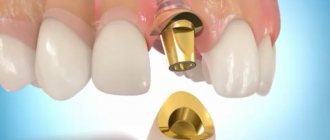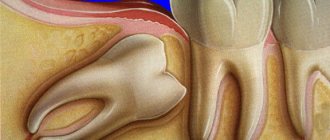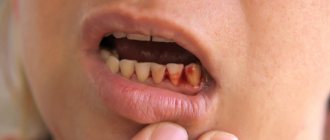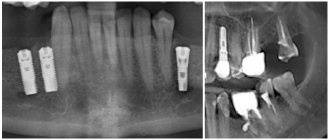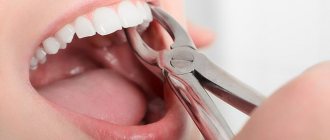A sinus lift is a procedure aimed at restoring lost bone tissue. Where there is insufficient volume, this procedure allows the installation of implants.
Sinus lift is a popular procedure. The term is clear to specialists working in the field of implantology, but means little to ordinary people. This also applies to potential patients who are planning to use the services of orthopedic surgery.
Complications after sinus lift
deserve separate consideration. This is not a new procedure; it has been used in implantology for the past 30 years. The first experiments were not the most successful. This is why specialists have an incentive to develop improved materials and tools.
When is a sinus lift indicated?
The structure of the bones of the upper and lower jaws has a significant difference. Both of them form the basis of the facial skeleton. Chewing, swallowing, speaking and breathing are just a few of the functions they perform. Sinus lifting is aimed at restoring bone tissue by creating optimal bone volume. This is achieved by introducing bone growth material into certain areas. Such zones are located under the maxillary sinus. There is no trauma during the procedure. Over time, the stimulator turns into ordinary bone tissue and grows with blood vessels. This is an excellent basis for placing a dental implant.
What dangers do you have to deal with?
Many patients are afraid of surgery because they believe that the maxillary sinus may be damaged. If you end up in the hands of a good doctor, there is no need to be afraid of this. This should not be an ordinary implantologist, but an oral and maxillofacial surgeon. Modern sinus lifting has nothing in common with the outdated techniques previously practiced in surgery. The risk of complications is minimized here. Modern operation:
- Painless;
- Carried out using ultrasound;
- Requires only local anesthesia;
- Does not require general anesthesia.
- Sometimes the procedure takes no more than 15 minutes.
Complications after sinus lift: can they be avoided?
A lot depends on the patient. He must strictly follow the dentist's advice. Complications can be dangerous, so you should not treat them irresponsibly. If all instructions are followed, adverse effects are also possible. This indicates a lack of detailed examination before surgery. That is why it is wrong to say that sinus lifting is necessarily associated with complications. They are possible in two cases:
- When a patient is negligent about his health;
- When a doctor approaches a procedure irresponsibly.
Various complications are possible after sinus lift
. Symptoms that should alert you:
- heat;
- bleeding;
- difficulty in nasal breathing.
The dentist monitors each patient for several days after the intervention. The first visit is after 3 days. The doctor only needs to look at the operated area once to draw conclusions about the patient’s compliance with all the recommendations prescribed to him. If there are problems, the doctor immediately eliminates them. In the worst case, when the patient gets to an amateur, no attention is paid to his well-being. Then the person can only independently determine whether there are deviations from the norm and contact another dentist.
Pain and other similar complications after sinus lift
do not occur normally! Even if you just feel unwell without any external signs, go to the doctor!
When should you not worry?
Edema is not a complication if:
- It gradually decreases and completely disappears after 3-7-10 days (depending on the complexity of the operation).
- It is localized at the site of surgery and implantation and does not spread to healthy, nearby tissues.
- It is not accompanied by severe pain and high body temperature.
- It is not accompanied by bleeding or purulent discharge from the area of the postoperative wound.
In general, there is no need to worry if the swelling does not interfere with your normal lifestyle (subject to the necessary restrictions during the rehabilitation period) and gradually decreases in size. In this case, it is enough to follow the doctor’s recommendations in the postoperative period and appear in a timely manner for a scheduled examination. Usually three days for women and two days for men is enough to reduce swelling.
Usually, the attending physician knows everything in advance when planning an operation.
Feel free to ask about the number of days with noticeable post-operative swelling. Based on these calculations, we issue certificates of incapacity for work or plan operations before the weekend. Warn us about possible trips and important events; it is better to plan the operation without compromising your work and personal life. You should understand that you will have to make lifestyle changes after the procedure. Social activity after the operation should be planned to be reduced. You will not be able to be active with swelling as before the operation; it is better to sit at home for a couple of days.
Levin Dmitry Valerievich
Founder and Chief Doctor of the Center
Sinusitis
Speaking about complications after sinus lift
, the symptoms of sinusitis are considered leading. The doctor may damage the Schneiderian membrane. It is located in the area of the maxillary sinuses. This is possible if the dentist uses hand instruments instead of an ultrasonic device. An infection gets into the upper jaw, causing sinusitis or sinusitis. Exacerbation of sinusitis is a contraindication to sinus lift. The disease must first be cured. Usually the doctor prescribes a 2-week course of antibiotic therapy.
Ways to solve the problem
A detailed x-ray examination is carried out on a computed tomograph in macro mode, the doctor determines whether there is inflammation or whether it is just panic from noticeable swelling. After assessing the clinical situation, the doctor will prescribe treatment aimed at eliminating the cause of the swelling.
- In severe cases, repeated surgical intervention may be resorted to (in case of implant rejection, purulent complications).
- In cases where the swelling does not bother the patient too much and gradually decreases during the first 7-10 days, additional medical intervention is not required and this symptom will disappear on its own as the tissue heals.
Patients often come to our Center with complications after unsuccessful operations. We specialize in helping with problems related to maxillary sinus dysfunction. The specialized ENT department is equipped with the necessary equipment to eliminate sinus lift complications.
What should you not do to prevent complications after a sinus lift?
Adviсe
Physical activity
- Physical activity should be minimal on the day of surgery. Otherwise, complications such as tachycardia and bleeding are possible.
- Avoid lifting heavy objects after a recent sinus lift.
- For about 2 weeks after surgery, avoid intense sports or other strenuous physical activities.
Diet
- You should not eat food immediately after a sinus lift. You can eat after the anesthesia wears off. But it is recommended to chew on the opposite side for at least the next 24-48 hours.
- For the next few days, eat pureed food and avoid solid foods. Hot food, herbs and spices that can cause irritation at the surgical site are prohibited. Avoid carbonated drinks for the next 3-4 days.
- Drink plenty of fluids between meals.
- Be patient and you will gradually return to your normal eating routine.
- It is not advisable to touch the place where the procedure was performed with sharp objects (cutlery, toothpicks, fingers or other objects).
Oral hygiene
Good oral hygiene is important. The dentist will recommend a special solution for you to rinse your mouth with every day. Rinsing is usually done after breakfast and before bed for 30 seconds. But in the first 24 hours after surgery, it is not recommended to rinse your mouth. It is desirable to have minimal impact on the operated area to prevent bleeding. After a day, take warm water and use it to rinse. It will remove food debris and ensure quick healing.
You are allowed to brush your teeth, but it is better not to touch the operated area. Use a soft-bristled toothbrush in close proximity to it. Keeping the area clean is important to prevent infection. Hygiene promotes tissue healing.
Recommendations after bone grafting of the jaw
Swelling may persist in the area of intervention, which is removed by applying cold. Within 3–4 weeks after osteoplasty it is recommended:
- limit physical activity;
- postpone air travel if it is planned;
- refrain from swimming and diving to prevent water from getting into the nose and maxillary sinuses;
- do not blow your nose, try not to sneeze or cough sharply;
- refuse cold, hot and solid foods; liquids should not be drunk through a straw;
- avoid hypothermia and overheating of the body;
- do not visit the sauna, bathhouse, solarium;
- brush your teeth twice a day with a brush and toothpaste;
- Do not rinse your mouth, but do oral baths.
You can find prices for sinus lifting of teeth at the Vimontale aesthetic dentistry clinic in the price list. Sign up for a consultation with a surgeon to decide on the method of bone grafting and plan implantation.
Expert of the article you are reading:
Akhmedkhanov Said Rashidovich
Dental surgeon, general dentist, implantologist, orthopedic dentist, dental therapist.
You may also be interested in:
Open sinus lift Closed sinus lift Gum augmentation with implantation
Show more
How to deal with pain?
- Minor pain or discomfort is normal. This is not considered a complication after a sinus lift
. You can take painkillers prescribed by your dentist: Ketanov, Nurofen and others. - Your doctor may prescribe you antibiotics. Strictly follow the instructions for taking the drug!
- If you suddenly catch a cold and have a runny nose, contact your doctor. He will prescribe you vasoconstrictor drops or other medications as needed. He will also warn you that in any case you should not blow your nose.
Preparing for surgery
The decision to use one of the three types of sinus lift is made by the doctor after examining the patient and taking into account individual characteristics.
The most important thing before surgery is to conduct a thorough diagnosis. Before a sinus lift, the dental surgeon needs to make sure that the patient’s maxillary sinuses are absolutely healthy. If there have been recent pathological formations or traces of surgical interventions there, the doctor has the right to refuse the patient a sinus lift. To determine and evaluate the structure of bone tissue, its density, volume, placement of the roots of adjacent teeth and to avoid possible complications, radiography is performed before surgery and clinical research methods are used.
General Tips
Do you want to avoid complications after sinus lift?
? Follow these tips:
- Don't blow your nose for 1-2 weeks.
- Don't pinch your nose before sneezing. Sneeze with your mouth open to avoid sinus pressure.
- Don't drink through a straw!
- While sleeping, do not lie down on the area that was operated on.
- Diving and flying create pressure in the sinuses. Eliminate them for a while.
- Avoid bending forward too much, lifting heavy objects, or playing musical instruments that require blowing.
- Do not smoke for the next 10-14 days. Nicotine interferes with tissue healing and can cause bleeding.
- Do not touch the operated area to avoid causing bleeding or infection.
Any activity that increases pressure in the oral cavity and sinuses is contraindicated! Even walking on stairs can be dangerous!

